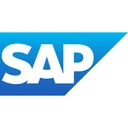Has anyone used Diagrams to store their company-specific documentation? Such as standards and guidelines for using fact sheets?
Using Diagrams to store documentation?
Best answer by Paco Quiroz
Hi Kathy!
We created a “Building Block” Factsheet type to store information of Architecture Patterns for reuse in solution design.
The Factsheet has information regarding applicable use cases for the pattern, as well as the relationships to IT Components, Tech Categories, Applications and interfaces it uses.
There are two subtypes of Building Block (per TOGAFs definition): Architecture Building Block, for Logical Patterns (mostly Tech Categories) and Solution Building Block, for Physical Patterns (IT Components, Interfaces, Applications).
We use the Resources tab to store links to any documentation (either links to existing URLs, or documents) and diagrams (in FreeDraw).
For more general documentation, Architecture Guidelines & Standards we keep links to other documentation sources, via links and uploaded documentation. Linked to an EA Objectives Factsheet.
Hope this helps.
Paco
Login to the community
No account yet? Create an account
Enter your E-mail address. We'll send you an e-mail with instructions to reset your password.




